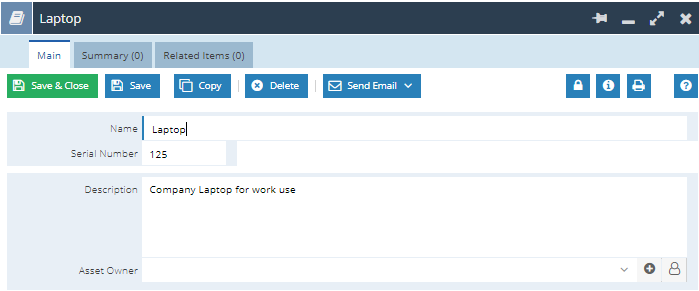Knowledgebase articles
- Welcome to the Knowledge Base
- Introduction
- Training
- Getting Started
- Preferences
- Activities
- Cases
- Importing Data
- Leads
- Marketing
- Introduction to Marketing
- Marketing Campaigns
- Mailing Lists
- Products
- Mailshots
- Upload Library
- Templates
- Event Management
- Compliance Records
- Force24
- Spotler Integration
- What is Spotler?
- Navigating your Spotler homepage
- GatorMail
- GatorLeads / Web Insights
- Tracking Code
- Setting up the Plugin
- Viewing Web Insights Data on your Form Layouts
- Domain Names and Online Activities
- Reporting incorrect Leads created through Web Insights
- Reporting on Web Insights data
- Using UTM Values
- Why aren’t Online Activities being created in the database?
- Why is GatorLeads recording online activities in a foreign language?
- GatorSurvey
- GatorWorkflow
- GatorPopup
- Opportunities
- Projects
- Integrations
- Mapping
- Electronic Signing Tools
- Creditsafe Integration
- Zapier
- Introduction to Zapier
- Available Triggers and Actions
- Linking your Workbooks Account to Zapier
- Setting up Zaps
- Posted Invoices to Xero Invoices
- Xero payments to Workbooks Tasks
- New Case to Google Drive folder
- New Case to Basecamp Project
- New Workbooks Case to JIRA Ticket
- Jira Issue to new Case
- 123FormBuilder Form Entry to Case
- Eventbrite Attendee to Sales Lead and Task
- Facebook Ad Leads to Sales Leads
- Wufoo Form Entry to Sales Lead
- Posted Credit Note to Task
- QuickBooks Online
- Survey Monkey responses to Tasks
- Multistep Zaps
- Email Integrations
- Event & Webinar Integration Tools
- GoToWebinar
- ON24
- Microsoft Office
- Outreach
- Installation
- Outreach Authentication
- Sync People to Outreach Prospects
- Sync Organisations to Outreach Accounts
- Sync Workbooks Opportunities to Outreach
- Sync Tasks/Activities from Workbooks to Outreach
- Sync Outreach Sequences to Workbooks
- Sync Outreach Sequence States to Workbooks
- Sync Outreach Sequence Step Numbers to Workbooks
- Sync Prospects/Accounts/Opportunities from Outreach to Workbooks
- Sync Outreach Tasks/Calls/Meetings to Workbooks
- Scribe/Workbooks Connector
- RingCentral
- Auditing
- Comments
- People & Organisations
- Reporting
- Introduction to Reporting
- Using Reports
- Introduction to Charts
- Exporting Reports
- Advanced Reporting
- Report Snapshots
- Dashboards
- Transaction Documents
- Introduction to Transaction Documents
- Displaying & Adding Transaction Documents
- Copying Transaction Documents
- Transaction Documents Fields Help
- Transaction Documents Line Items Help
- Printing & Sending Transaction Documents
- Managing Transaction Document Currencies
- Managing Transaction Document Statuses
- Setting a Blank Default Currency on Transaction Documents
- Credit Notes
- Customer Orders
- Invoices
- Quotations
- Supplier Orders
- Contract Management
- Sagelink
- Introduction to Transaction Documents
- Configuration
- Introduction to System Administration
- Users & Security
- Database
- Accounting
- Email Integrations
- Customisation
- Creating & Modifying Picklists
- Theme
- Record Types
- Creating Custom Fields
- Report-based Custom Fields
- Linked Fields & Reference Fields
- Record Templates
- Form Layouts
- Customising relationships between parties
- Opportunity Stages
- Custom Records
- Sign In Customisation
- Automation
- Contact Support
- Releases & Roadmap
Using Custom Records
Once you have created the Custom Record Type, you can add Custom Fields, Record Templates and Form Layouts as per the standard Record Types.
You may want to link this Record Type to other Records within your Workbooks.
For example:
- Asset Records linked to the People Records that they have been provided to.
- Sales Targets attached to Customer Organisations that will be used this year.
- Internal Projects linked to the Person that has requested the work and the Person that will be carrying it out.
This can all be achieved through the use of Dynamic Linked Items. This will allow you to link the Custom Record to other Record Types but will also add the ability to drill through to these records within Reports.
Example: Linking a Custom Record to a Person Record
This example will guide you through how to set up a Dynamic Linked Item (DLI) linking Assets Records to People. To do this you will need to create a field called ‘Asset Owner’.
Step 1 – Create the Report
First you will need to create a People Report that has a criteria applied to it to only show employees.
To do this go to Start > New > Report > Create a new pre-populated report, select ‘People’ and provide the report a name such as “Employees”.

You will now need to apply the following criteria to the Report:
Employer (main) > Object reference is ORG-1

This applies a criteria to only show People Records that are employed by your Own Organisation. The Report can now be saved and used in the DLI.
Note: If you have multiple Own Organisation records, you will need to add the other Organisation References to the criteria also.
Step 2 – Create the DLI
From Start > Configuration > Customisation > Record Types > Assets, select the Fields tab and from the New Custom Field picklist, select Dynamic Linked Item.

You will need to give the DLI a Field Label, which in this case is ‘Asset Owner’, and setup the Report that was configured in Step 1. Set the Display Field as the ‘Name’ column within the Report:

Save & Close the field. Once the field has been created it can be applied to your Form Layouts. You will now be able to link this Asset to an Employee through the Asset Owner Field.
